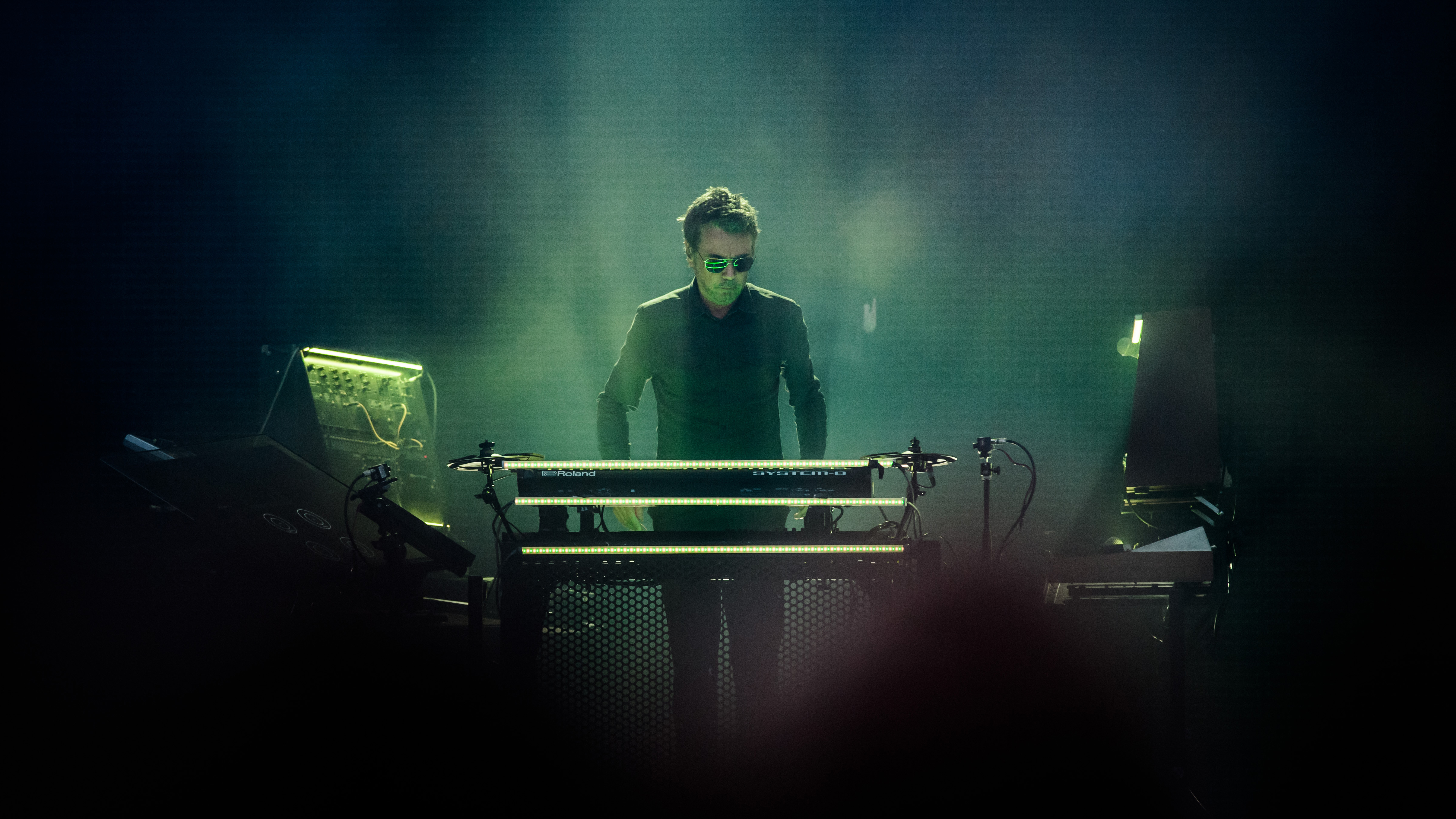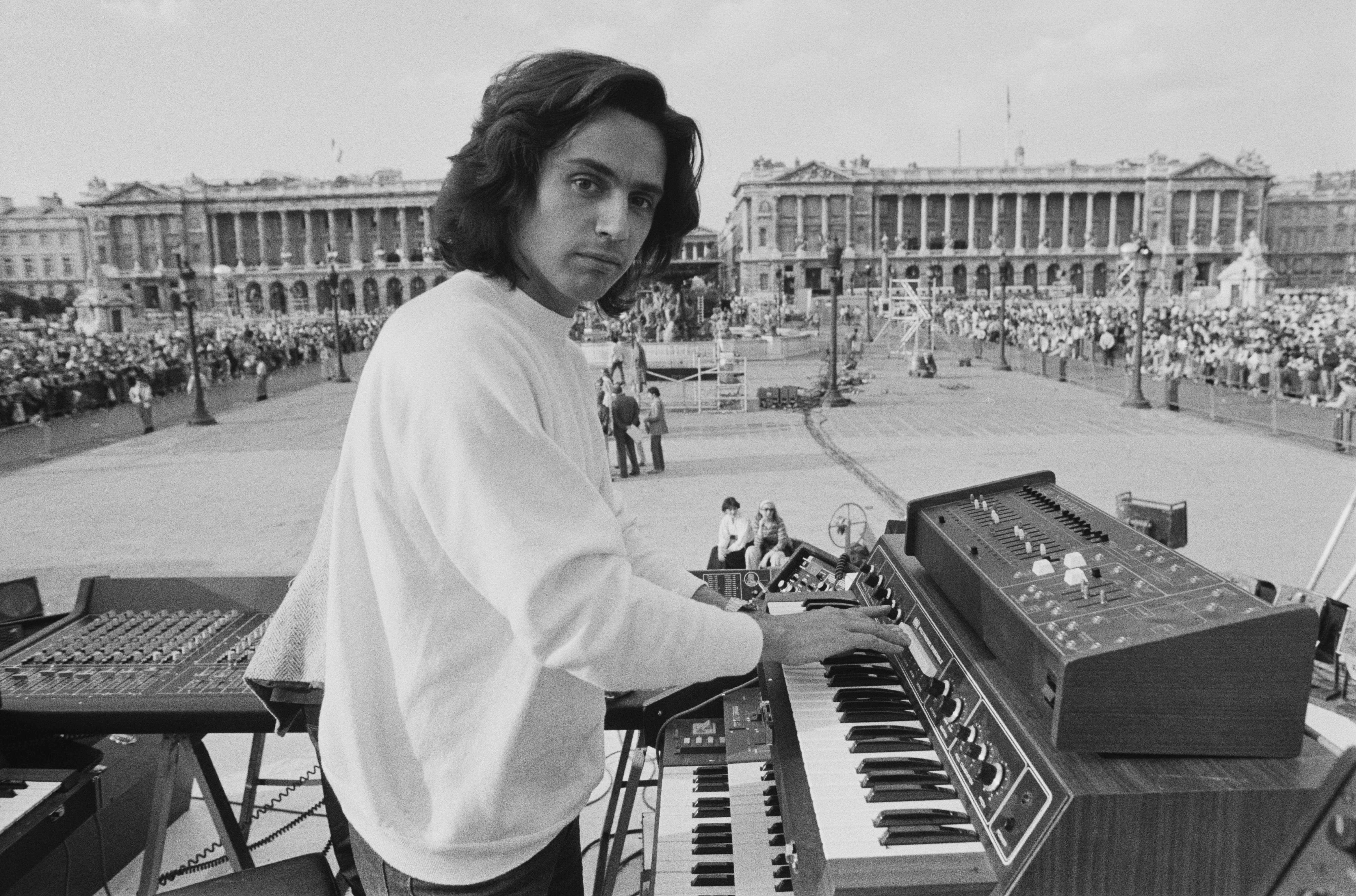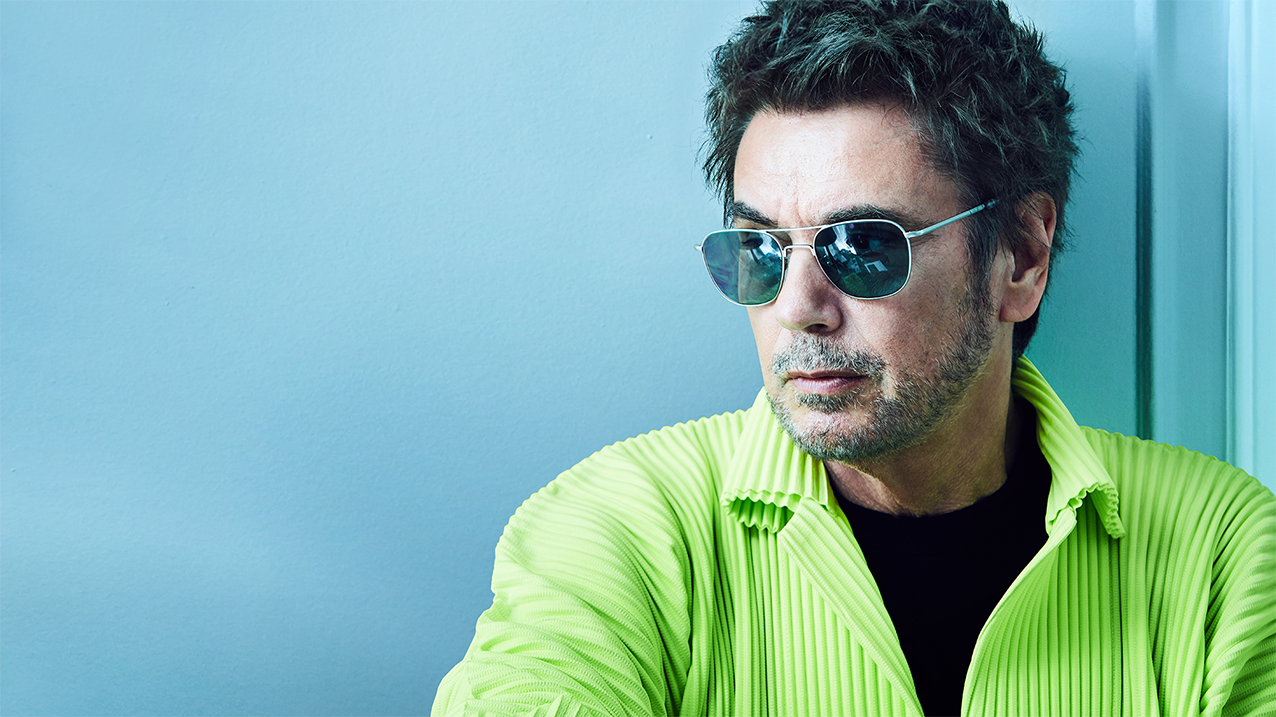"Electronic music is the classical music of the 21st century": How Jean-Michel Jarre brought the synthesizer to the masses
With little around to compete with the single Oxygène when he released it nearly 50 years ago, Jean-Michel Jarre became the pinup of synth pop, and has continued to embrace the cutting-edge ever since. A true pionnier du synthétiseur…

In the 1970s there was no 'electronic music' as such. Well okay, of course there was, but if you were growing up in that grey decade, it was unlikely you'd know that much about it.
Kraftwerk, Tangerine Dream et al were doing their thing, but it was largely kept behind closed German doors. Wendy Carlos had made an electronic album or two, but in a classical music vein. In the UK, Keith Emerson was widdling his prog synths, the Human League were just dusting off their white coats, Brian Eno was glitz, glam and ambient, and Gary Numan was yet to find 'that' Minimoog. So it was up to a charismatic French guy to introduce us to pure synth music. And what music it was.
The door that opened our eyes and millions of sales for Jarre was the track Oxygène (Part IV), yet it was not really what you'd call 'hit record material' for 1976. It started with white noise sounding like the sea – generated by a VCS3 – before taking up a simple beat, an impressive lead melody (that would become the Jarre trademark), and chugging along with other bits and pieces played by an EMS Synthi AKS and ARP 2600 among others. Jarre recorded the whole track in his kitchen, yet it sounds more polished than any veneer drinks cabinet your dad would have owned in the year it came out. And warmer than any 1970s' Teasmade, come to think of it.
The album Oxygène (actually Jarre's third release, but we won't dwell on the first two) was just as impressive, a series of just six tracks, or parts, all utilising the same sounds and synth style. Brim full of melodies and atmosphere, it was about as outlandish a release in 1976/7 as anyone could wish for, especially those very disillusioned by the constant diet of Showaddywaddy, Max Bygraves and David Soul that the charts served up in those days. We weren't alone in welcoming it across the channel as it went on to sell some 15 million copies.
Similar album stunners would follow like Équinoxe (1978) and Les Chants Magnétiques (1981). They maintained the synth theme, with Équinoxe sounding basically like a Mk2 Oxygène, but even managing to outgun the original on occasion.
Later albums would start to sound jaded against these early triumphs – the second and third Oxygène albums, for example, were patchy compared to the first, even though they used the same synth patches (yes, that is a synth 'joke'). However, with all of Jarre's releases he would grab the latest tech to create the tunes, with 1984's Zoolook being the first to embrace the then-new sampling, and often to great effect.
As if bringing the sound of the synth and music recording technology to the masses was not enough, Jarre would outdo this feat by playing concerts to (literally) millions of people
As if bringing the sound of the synth and music recording technology to the masses was not enough, Jarre would outdo this feat by playing concerts to (literally) millions of people. He was the first western artist to play in China (1981), and while that resulted in a fantastic live album, The Concerts In China (1982), it would be his outdoor shows at various venues across the world and over a 20-year period that shifted notches up a few levels.
Get the MusicRadar Newsletter
Want all the hottest music and gear news, reviews, deals, features and more, direct to your inbox? Sign up here.
These included playing at the Place de la Concorde (in 1979) and Houston (in 1986), with each show attracting greater record-breaking crowds, right up to 3.5 million at a show in Moscow in 1997. Jarre played to around 12 million people in total until the turn of the century when presumably 21st-century health and safety laws put a stop to them.

Returning to our main theme, Jean-Michel has always loved that technology: from the famous laser harp used to dramatically reveal him triggering sounds on stage with actual lasers, to putting on performances where a huge mirror would rotate above him to show what he was playing. (We even wrote a list of the gear on stage while geeking out at one performance. Trust us, it was a lot. We did get some funny looks while doing it though.)
He still embraces the latest technology releases, including last year's Sound Particles Skydust 3D synth, and still embraces publicity, like being the first person to take a trip in a flying car (really). But in return, we should embrace this six-decade playing Frenchman as one of the true music pioneers of our time, a man who once declared that "electronic music is the classical music of the 21st century". Nous t'aimons!
Jean Michel-Jarre in four tracks
1. Jean Michel-Jarre - Oxygène (Part IV)
It does sound a little twee now given its birth date and simple, ridiculously memorable melody, but this is probably the only synth instrumental that could play at a wedding party and get away with. Well, we'd dance to it.
2. Jean Michel-Jarre - Équinoxe (Part I)
Équinoxe (Part V) might be the scene stealer with its impressive lead synth line (and betters Oxygène in our opinion), but Équinoxe (Part I) is the atmospheric introduction to Jarre's followup album, and his beautiful welcome to what his studio kitchen was cooking up. You can probably play it on a Super Gemini these days just by looking at one and not even switching it on, but back in '78 it was black magic.
3. Jean Michel-Jarre - Les Chants Magnétiques (Part 4)
By now you should be getting the drift: we're going to have a simple but insistent lead synth, and we'll build in some layers, add some effects, even a vocoder in this case… It's a repeated, simple process, but Jarre's execution on this track is especially brilliant. Not that low in tempo, but it feels as laid-back as any Jarre track; one that will have you dreaming of swimming in an ocean of synths. Does for us anyway.
4. Jean Michel-Jarre - Souvenir of China
One of the surprise bonus tracks on The Concerts In China double album as it's not from any previous Jarre album (but would easily have made the cut if asked). We don't like the drum fills towards the end but there's real emotion here, with 'samples' of Jarre's tour, strings to die for and a proper nostalgic feel. If anyone ever tells you synths are too cold, send them round ours and we'll play them this.


Andy has been writing about music production and technology for 30 years having started out on Music Technology magazine back in 1992. He has edited the magazines Future Music, Keyboard Review, MusicTech and Computer Music, which he helped launch back in 1998. He owns way too many synthesizers.











